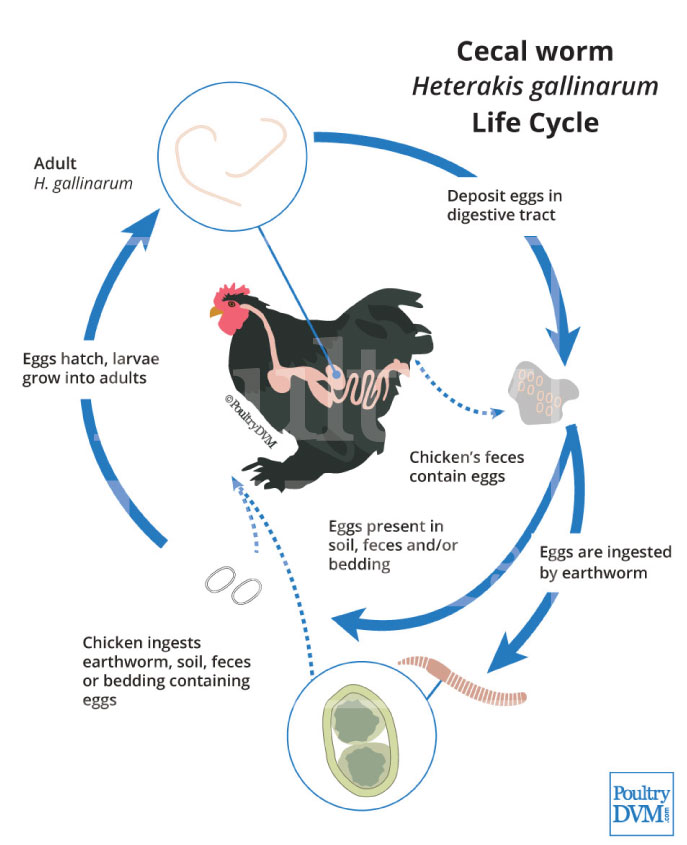Veterinary advice should be sought from your local veterinarian before applying any treatment or vaccine. Not sure who to use? Look up veterinarians who specialize in poultry using our directory listing. Find me a Vet
Other Names: Heterakis

| Name | Summary | |
|---|---|---|
| Albendazole (Valbazen) | Given to each bird orally. Measure out ¼ mL (per bantam) or ½ mL (per regular-sized breed). Repeat in 2 weeks. | G Damerow |
| Safeguard 10% Liquid Dewormer for Goats | Fenbendazole is used off-label in poultry. Add to the flock's drinking water source at a rate of 3 mL per gallon of water. | G Damerow |
| Panacur or Safeguard Equine Dewormer 25 g Paste 10% | Fenbendazole is used off-label in poultry. Given individually to each chicken orally, squeezed out in a pea-size portion and placed inside their mouth. Repeat in 10 days. | G Damerow |
| (1% Ivermectin) Injectable for Cattle and Swine | Ivermectin is used off-label in poultry. The drug is given to each chicken orally or added to the flock’s water source. If given by mouth - 0.25 mL per large size, 0.1 mL per bantam size. If added to flock water source- 4 mL per gallon of water. Made fresh daily for 2 consecutive days. | G Damerow |
| Levamisole Soluble Drench Powder (46.8g) | Levamisole is used off label in poultry. It's added to the flock’s water source. Note- Chickens who are severely debilitated should not receive this medication, because it will impact their ability to fight infections. Add to the flock’s drinking water source - at a rate of 10 mL per gallon of water for only 1 day. | G Damerow |
| Diatomaceous earth | Added as 2% of overall diet | D Bennett; R Isabirye et al., 2019 |
| Garlic | 2.5 mg/bird Drinking water - 1.5 mg/L of water daily for 5 days | F Velkers et al., 2011 |
| Turmeric (Curcuma longa) | 200-600 mg/kg | Alrubaie Al, 2015 |
| Papaya (Carica papaya) seed extract | 20 ml/kg feed; 1 mg per chicken for 5 days | Feroza et al., 2017; Dakpogan et al., 2017 |
| Papaya (Carica papaya) seed powder | 6 g/kg body weight; 300 mg/day per bird | Ozaraga et al., 2017; Ameen et al., 2012 |
| Diatomaceous earth | Added as 2% of overall diet | D Bennett; R Isabirye et al., 2019 |
| Pumpkin seeds | 1 g/kg BW | T Feitosa et al., 2013 |
© 2026 PoultryDVM All Rights Reserved.